作者:Chris Meng
?
毫米波用戶需要通過測試連續波來確認TI毫米波芯片發射射頻信號的頻率的準確性。用戶對聯參考設計板上進行發射天線的連續波測試有不同的測試要求。下面介紹三種不同測試場景的測試流程。
測試條件:
- 硬件平臺: MMWCAS-RF-EVM (revE)/MMWCAS-DSP-EVM
- PC軟件: mmwave studio 3.00.00.14
- AWR2243 ES1.1的固件補丁: mmwave_dfp_02_02_03_01
- 頻譜分析儀
測試場景一
1. 測試要求:對級聯板上每個AWR2243所有3根發射天線同時發射連續波的測試。
2. 測試流程:
- 先在mmwave studio里運行下面的腳本進行所有4片AWR2243的參數配置。\mmwave_studio_03_00_00_14\mmWaveStudio\Scripts\Cascade\Cascade_Configuration_ContStream.lua (測試腳本已經包含在mmwave studio里)
- 然后運行下面的腳本。這個腳本會先使能芯片Slave 3的連續波發射,然后使能Slave2, Slave1,Master芯片。接著停止所有芯片的信號發射。最后保存相關ADC數據到SSD硬盤上,傳送給PC。\mmwave_studio_03_00_00_14\mmWaveStudio\Scripts\Cascade\Cascade_Capture_ContStream.lua(測試腳本已經包含在mmwave studio里)
- 通過頻譜儀抓取和觀測芯片的發射信號。
測試場景二
1. 測試要求:對級聯板的AWR2243 主芯片(master)的單發射天線進行連續波的測試。
2. 測試流程:
以主芯片的TX0天線為例 (RadarDevice1)
a. 配置主芯片。
在mmwave studio里運行下面的腳本:
Cascade_Configuration_ContStream_master_example.lua (具體內容見附錄)
運行腳本后的mmwave studio界面信息如下:
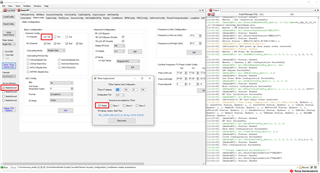
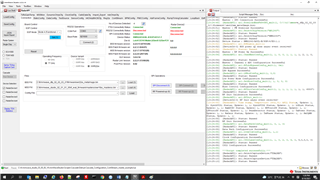
b. 發射連續波。
運行下面的腳本:\mmwave_studio_03_00_00_14\mmWaveStudio\Scripts\Cascade\Cascade_Capture_ContStream.lua(測試腳本已經包含在mmwave studio里)
c. 通過頻譜儀抓取和觀測芯片的發射信號。
測試場景三
1. 測試要求:對級聯板的AWR2243 從芯片(slave)的單發射天線進行連續波的測試。
2. 測試流程:
以slave2芯片的TX1天線為例 (RadarDevice3)
a. 配置從芯片。
在mmwave studio里運行下面的腳本:Cascade_Configuration_ContStream_slave_example.lua(具體內容見附錄)
運行腳本后的mmwave studio界面信息如下:
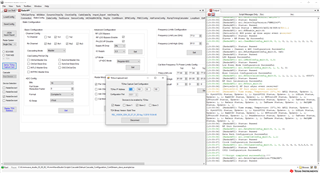
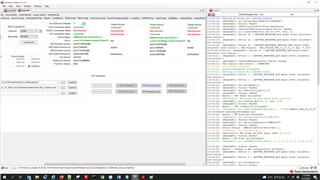
b. 發射連續波。
運行下面的腳本:\mmwave_studio_03_00_00_14\mmWaveStudio\Scripts\Cascade\Cascade_Capture_ContStream.lua(測試腳本已經包含在mmwave studio里)
c. 通過頻譜儀抓取和觀測芯片的發射信號。
注意事項:
如果改變了AWR2243的ChanNAdcConfig_mult 參數(相對于上一次配置),用戶必須對板子進行斷電,再上電的操作。
常見問題:
1. 問題:如何使能、不使能主芯片或者是從芯片里的不同發射天線TX?
答案::用戶需要修改配置參數的LUA腳本里ar1.ChanNAdcConfig_mult 函數的Tx0En/Tx1En/Tx2En 參數。關于這個函數的更多信息見下。對于Tx0En/Tx1En/Tx2En, 1表示使能,0表示不使能。
Int32 ar1.ChanNAdcConfig_mult(UInt16 RadarDeviceId, UInt16 Tx0En, UInt16 Tx1En, UInt16 Tx2En, UInt16 Rx0En, UInt16 Rx1En, UInt16 Rx2En, UInt32 Rx3En, Int32 BitsVal, UInt32 FmtVal, UInt32 IQSwap, UInt16 CasCadeMode) -? Static device config API which defines configure both the Transmiter and Reciever channels of Radar device and also ADC data format output
_I_ UInt16???? RadarDeviceId????? - Radar Device Id
_I_ UInt16???? Tx0En???? - Tx0 channel
_I_ UInt16???? Tx1En???? - Tx1 channel
_I_ UInt16???? Tx2En???? - Tx2 channel
_I_ UInt16???? Rx0En???? - Rx0 channel
_I_ UInt16???? Rx1En???? - Rx1 channnel
_I_ UInt16???? Rx2En???? - Rx2 channel
_I_ UInt32???? Rx3En???? - Rx3 channel[b15:0] + (CascadePinOutCfg[b31:16] b16:ClkOutMasterDis, b17:SynOutMasterDis, b18:ClkOutSlaveEna, b19:SynOutSlaveEna, b20:IntLOMasterEna, b21:OSCClkOutMasterDis, b22:INTFRCMasterEna)
_I_ Int32??????? BitsVal??? - Number of ADC bits
_I_ UInt32???? FmtVal??? - ADC output format[b15:0] + FullScaleReductionFactor[b31:16]
_I_ UInt32???? IQSwap?? - ADC Mode
_I_ UInt16???? CasCadeMode????? - CascadeMode(Single Chip: 0x0000, MultiChip Master:0x0001, MultiChip Slave:0x0002)
2. 問題:如何使能或者關閉級聯板上不同的從芯片?
答案:用戶需要修改配置參數的LUA里RadarDevice的設置。RadarDevice里dev1是主芯片,dev2、dev3、dev4是從芯片。
例如: RadarDevice??????? =??? {1, 0, 1, 0}?????? -- {dev1, dev2, dev3, dev4}, 1: Enable, 0: Disable
3. 問題:如何改變連續波的頻率?
答案:用戶需要修改配置參數的LUA里ar1.ContStrConfig_mult函數的startFreqConst參數值。
Int32 ar1.ContStrConfig_mult(UInt16 RadarDeviceId, Double startFreqConst, UInt16 digOutSampleRate, Char rxGain, Char hpfCornerFreq1, Char hpfCornerFreq2, UInt32 tx0OutPowerBackoffCode, UInt32 tx1OutPowerBackoffCode, UInt32 tx2OutPowerBackoffCode, UInt16 tx0PhaseShifter, UInt16 tx1PhaseShifter, UInt32 tx2PhaseShifter) - Continuous Streming Configuration API defines Configuration of the data path to transfer the captured ADC samples continuously without missing any sample to external Device(host)
_I_ UInt16???? RadarDeviceId????? - Radar Device Id
_I_ Double??? startFreqConst????? - Start Frequency for each profile of chirp in GHz
_I_ UInt16???? digOutSampleRate?????????????? - ADC sampling rate for each profile in ksps
_I_ Char???????? rxGain??? - Rx gain for each profile in dB
_I_ Char???????? hpfCornerFreq1?? - HPF1 corner frequency for each profile in KHz
_I_ Char???????? hpfCornerFreq2?? - HPF2 corner frequency for each profile in KHz
_I_ UInt32???? tx0OutPowerBackoffCode - How much the trasmit power should be reduced from Max in Tx0 Channel
_I_ UInt32???? tx1OutPowerBackoffCode - How much the trasmit power should be reduced from Max in Tx1 Channel
_I_ UInt32???? tx2OutPowerBackoffCode - How much the trasmit power should be reduced from Max in Tx2 Channel
_I_ UInt16???? tx0PhaseShifter??? - The additional phase shift to be introduced on Tx0 Channel
_I_ UInt16???? tx1PhaseShifter??? - The additional phase shift to be introduced on Tx1 Channel
_I_ UInt32???? tx2PhaseShifter??? - The additional phase shift to be introduced on Tx2 Channel(b0:15) + ForceSelect(b16) + VCOSelecct(b17))
附錄:
?
1. Cascade_Configuration_ContStream_master_example.lua
----------------------------------------User Constants--------------------------------------------
dev_list = {1, 2, 4, 8} -- Device map
RadarDevice = {1, 0, 0, 0} -- {dev1, dev2, dev3, dev4}, 1: Enable, 0: Disable
cascade_mode_list = {0, 2, 2, 2} -- 0: Single chip, 1: Master, 2: Slave //Chris: need to set in code directly
-- F/W Download Path
-- Uncomment the next line if you wish to pop-up a dialog box to select the firmware image file
-- Otherwise, hardcode the path to the firmware metaimage below
-- By default, the firmware filename is: xwr22xx_metaImage.bin
-- metaImagePath = RSTD.BrowseForFile(RSTD.GetSettingsPath(), "bin", "Browse to .bin file")
-- For 2243 ES1.1 devices
metaImagePath = "C:\\ti\\mmwave_dfp_02_02_03_01\\firmware\\xwr22xx_metaImage.bin"
-- For 2243 ES1.0 devices
-- metaImagePath = "C:\\ti\\mmwave_dfp_02_02_00_02\\firmware\\xwr22xx_metaImage.bin"
-- IP Address for the TDA2 Host Board
-- Change this accordingly for your setup
TDA_IPAddress = "192.168.33.180"
-- Device map of all the devices to be enabled by TDA
-- 1 - master ; 2- slave1 ; 4 - slave2 ; 8 - slave3
deviceMapOverall = RadarDevice[1] + (RadarDevice[2]*2) + (RadarDevice[3]*4) + (RadarDevice[4]*8)
deviceMapSlaves = (RadarDevice[2]*2) + (RadarDevice[3]*4) + (RadarDevice[4]*8)
------------------------------ API Configuration ------------------------------------------------
-- 1. Connection to TDA. 2. Selecting Cascade/Single Chip. 3. Selecting 2-chip/4-chip
WriteToLog("Setting up Studio for Cascade started..\n", "blue")
if(0 == ar1.ConnectTDA(TDA_IPAddress, 5001, deviceMapOverall)) then
WriteToLog("ConnectTDA Successful\n", "green")
else
WriteToLog("ConnectTDA Failed\n", "red")
return -1
end
if(0 == ar1.selectCascadeMode(1)) then
WriteToLog("selectCascadeMode Successful\n", "green")
else
WriteToLog("selectCascadeMode Failed\n", "red")
return -1
end
WriteToLog("Setting up Studio for Cascade ended..\n", "blue")
--Master Initialization
-- SOP Mode Configuration
if (0 == ar1.SOPControl_mult(1, 4)) then
WriteToLog("Master : SOP Reset Successful\n", "green")
else
WriteToLog("Master : SOP Reset Failed\n", "red")
return -1
end
-- SPI Connect
if (0 == ar1.PowerOn_mult(1, 0, 1000, 0, 0)) then
WriteToLog("Master : SPI Connection Successful\n", "green")
else
WriteToLog("Master : SPI Connection Failed\n", "red")
return -1
end
-- Firmware Download. (SOP 4 - MetaImage)
if (0 == ar1.DownloadBssFwOvSPI_mult(1, metaImagePath)) then
WriteToLog("Master : FW Download Successful\n", "green")
else
WriteToLog("Master : FW Download Failed\n", "red")
return -1
end
-- RF Power Up
if (0 == ar1.RfEnable_mult(1)) then
WriteToLog("Master : RF Power Up Successful\n", "green")
else
WriteToLog("Master : RF Power Up Failed\n", "red")
return -1
end
-- Channel & ADC Configuration
if (0 == ar1.ChanNAdcConfig_mult(1,1,0,0,1,1,1,1,2,1,0,0)) then
WriteToLog("Master : Channel & ADC Configuration Successful\n", "green")
else
WriteToLog("Master : Channel & ADC Configuration Failed\n", "red")
return -2
end
-- All devices together
-- Including this depends on the type of board being used.
-- LDO configuration
if (0 == ar1.RfLdoBypassConfig_mult(deviceMapOverall, 3)) then
WriteToLog("LDO Bypass Successful\n", "green")
else
WriteToLog("LDO Bypass failed\n", "red")
return -2
end
-- Low Power Mode Configuration
if (0 == ar1.LPModConfig_mult(deviceMapOverall,0, 0)) then
WriteToLog("Low Power Mode Configuration Successful\n", "green")
else
WriteToLog("Low Power Mode Configuration failed\n", "red")
return -2
end
-- Miscellaneous Control Configuration
if (0 == ar1.SetMiscConfig_mult(deviceMapOverall, 1, 0, 0, 0)) then
WriteToLog("Misc Control Configuration Successful\n", "green")
else
WriteToLog("Misc Control Configuration failed\n", "red")
return -2
end
-- Edit this API to enable/disable the boot time calibration. Enabled by default.
-- RF Init Calibration Configuration
if (0 == ar1.RfInitCalibConfig_mult(deviceMapOverall, 1, 1, 1, 1, 1, 1, 1, 65537)) then
WriteToLog("RF Init Calibration Successful\n", "green")
else
WriteToLog("RF Init Calibration failed\n", "red")
return -2
end
-- RF Init
if (0 == ar1.RfInit_mult(deviceMapOverall)) then
WriteToLog("RF Init Successful\n", "green")
else
WriteToLog("RF Init failed\n", "red")
return -2
end
---------------------------Data Configuration----------------------------------
-- Data path Configuration
if (0 == ar1.DataPathConfig_mult(deviceMapOverall, 0, 1, 0)) then
WriteToLog("Data Path Configuration Successful\n", "green")
else
WriteToLog("Data Path Configuration failed\n", "red")
return -3
end
-- Clock Configuration
if (0 == ar1.LvdsClkConfig_mult(deviceMapOverall, 1, 1)) then
WriteToLog("Clock Configuration Successful\n", "green")
else
WriteToLog("Clock Configuration failed\n", "red")
return -3
end
-- CSI2 Configuration
if (0 == ar1.CSI2LaneConfig_mult(deviceMapOverall, 1, 0, 2, 0, 4, 0, 5, 0, 3, 0, 0)) then
WriteToLog("CSI2 Configuration Successful\n", "green")
else
WriteToLog("CSI2 Configuration failed\n", "red")
return -3
end
2. Cascade_Configuration_ContStream_slave_example.lua
----------------------------------------User Constants--------------------------------------------
dev_list = {1, 2, 4, 8} -- Device map
RadarDevice = {1, 0, 1, 0} -- {dev1, dev2, dev3, dev4}, 1: Enable, 0: Disable
cascade_mode_list = {1, 2, 2, 2} -- 0: Single chip, 1: Master, 2: Slave
-- F/W Download Path
-- Uncomment the next line if you wish to pop-up a dialog box to select the firmware image file
-- Otherwise, hardcode the path to the firmware metaimage below
-- By default, the firmware filename is: xwr22xx_metaImage.bin
-- metaImagePath = RSTD.BrowseForFile(RSTD.GetSettingsPath(), "bin", "Browse to .bin file")
-- For 2243 ES1.1 devices
metaImagePath = "C:\\ti\\mmwave_dfp_02_02_03_01\\firmware\\xwr22xx_metaImage.bin"
-- For 2243 ES1.0 devices
-- metaImagePath = "C:\\ti\\mmwave_dfp_02_02_00_02\\firmware\\xwr22xx_metaImage.bin"
-- IP Address for the TDA2 Host Board
-- Change this accordingly for your setup
TDA_IPAddress = "192.168.33.180"
-- Device map of all the devices to be enabled by TDA
-- 1 - master ; 2- slave1 ; 4 - slave2 ; 8 - slave3
deviceMapOverall = RadarDevice[1] + (RadarDevice[2]*2) + (RadarDevice[3]*4) + (RadarDevice[4]*8)
deviceMapSlaves = (RadarDevice[2]*2) + (RadarDevice[3]*4) + (RadarDevice[4]*8)
------------------------------ API Configuration ------------------------------------------------
-- 1. Connection to TDA. 2. Selecting Cascade/Single Chip. 3. Selecting 2-chip/4-chip
WriteToLog("Setting up Studio for Cascade started..\n", "blue")
if(0 == ar1.ConnectTDA(TDA_IPAddress, 5001, deviceMapOverall)) then
WriteToLog("ConnectTDA Successful\n", "green")
else
WriteToLog("ConnectTDA Failed\n", "red")
return -1
end
if(0 == ar1.selectCascadeMode(1)) then
WriteToLog("selectCascadeMode Successful\n", "green")
else
WriteToLog("selectCascadeMode Failed\n", "red")
return -1
end
WriteToLog("Setting up Studio for Cascade ended..\n", "blue")
--Master Initialization
-- SOP Mode Configuration
if (0 == ar1.SOPControl_mult(1, 4)) then
WriteToLog("Master : SOP Reset Successful\n", "green")
else
WriteToLog("Master : SOP Reset Failed\n", "red")
return -1
end
-- SPI Connect
if (0 == ar1.PowerOn_mult(1, 0, 1000, 0, 0)) then
WriteToLog("Master : SPI Connection Successful\n", "green")
else
WriteToLog("Master : SPI Connection Failed\n", "red")
return -1
end
-- Firmware Download. (SOP 4 - MetaImage)
if (0 == ar1.DownloadBssFwOvSPI_mult(1, metaImagePath)) then
WriteToLog("Master : FW Download Successful\n", "green")
else
WriteToLog("Master : FW Download Failed\n", "red")
return -1
end
-- RF Power Up
if (0 == ar1.RfEnable_mult(1)) then
WriteToLog("Master : RF Power Up Successful\n", "green")
else
WriteToLog("Master : RF Power Up Failed\n", "red")
return -1
end
-- Channel & ADC Configuration
if (0 == ar1.ChanNAdcConfig_mult(1,0,0,0,1,1,1,1,2,1,0,1)) then
WriteToLog("Master : Channel & ADC Configuration Successful\n", "green")
else
WriteToLog("Master : Channel & ADC Configuration Failed\n", "red")
return -2
end
-- Slaves Initialization
for i=2,table.getn(RadarDevice) do
local status = 0
if ((RadarDevice[1]==1) and (RadarDevice[i]==1)) then
-- SOP Mode Configuration
if (0 == ar1.SOPControl_mult(dev_list[i], 4)) then
WriteToLog("Device "..i.." : SOP Reset Successful\n", "green")
else
WriteToLog("Device "..i.." : SOP Reset Failed\n", "red")
return -1
end
-- SPI Connect
if (0 == ar1.AddDevice(dev_list[i])) then
WriteToLog("Device "..i.." : SPI Connection Successful\n", "green")
else
WriteToLog("Device "..i.." : SPI Connection Failed\n", "red")
return -1
end
end
end
-- Firmware Download. (SOP 4 - MetaImage)
if (0 == ar1.DownloadBssFwOvSPI_mult(deviceMapSlaves, metaImagePath)) then
WriteToLog("Slaves : FW Download Successful\n", "green")
else
WriteToLog("Slaves : FW Download Failed\n", "red")
return -1
end
-- RF Power Up
if (0 == ar1.RfEnable_mult(deviceMapSlaves)) then
WriteToLog("Slaves : RF Power Up Successful\n", "green")
else
WriteToLog("Slaves : RF Power Up Failed\n", "red")
return -1
end
-- Channel & ADC Configuration
if (0 == ar1.ChanNAdcConfig_mult(deviceMapSlaves,0,1,0,1,1,1,1,2,1,0,2)) then
WriteToLog("Slaves : Channel & ADC Configuration Successful\n", "green")
else
WriteToLog("Slaves : Channel & ADC Configuration Failed\n", "red")
return -2
end
-- All devices together
-- Including this depends on the type of board being used.
-- LDO configuration
if (0 == ar1.RfLdoBypassConfig_mult(deviceMapOverall, 3)) then
WriteToLog("LDO Bypass Successful\n", "green")
else
WriteToLog("LDO Bypass failed\n", "red")
return -2
end
-- Low Power Mode Configuration
if (0 == ar1.LPModConfig_mult(deviceMapOverall,0, 0)) then
WriteToLog("Low Power Mode Configuration Successful\n", "green")
else
WriteToLog("Low Power Mode Configuration failed\n", "red")
return -2
end
-- Miscellaneous Control Configuration
if (0 == ar1.SetMiscConfig_mult(deviceMapOverall, 1, 0, 0, 0)) then
WriteToLog("Misc Control Configuration Successful\n", "green")
else
WriteToLog("Misc Control Configuration failed\n", "red")
return -2
end
-- Edit this API to enable/disable the boot time calibration. Enabled by default.
-- RF Init Calibration Configuration
if (0 == ar1.RfInitCalibConfig_mult(deviceMapOverall, 1, 1, 1, 1, 1, 1, 1, 65537)) then
WriteToLog("RF Init Calibration Successful\n", "green")
else
WriteToLog("RF Init Calibration failed\n", "red")
return -2
end
-- RF Init
if (0 == ar1.RfInit_mult(deviceMapOverall)) then
WriteToLog("RF Init Successful\n", "green")
else
WriteToLog("RF Init failed\n", "red")
return -2
end
---------------------------Data Configuration----------------------------------
-- Data path Configuration
if (0 == ar1.DataPathConfig_mult(deviceMapOverall, 0, 1, 0)) then
WriteToLog("Data Path Configuration Successful\n", "green")
else
WriteToLog("Data Path Configuration failed\n", "red")
return -3
end
-- Clock Configuration
if (0 == ar1.LvdsClkConfig_mult(deviceMapOverall, 1, 1)) then
WriteToLog("Clock Configuration Successful\n", "green")
else
WriteToLog("Clock Configuration failed\n", "red")
return -3
end
-- CSI2 Configuration
if (0 == ar1.CSI2LaneConfig_mult(deviceMapOverall, 1, 0, 2, 0, 4, 0, 5, 0, 3, 0, 0)) then
WriteToLog("CSI2 Configuration Successful\n", "green")
else
WriteToLog("CSI2 Configuration failed\n", "red")
return -3
end
?
 電子發燒友App
電子發燒友App









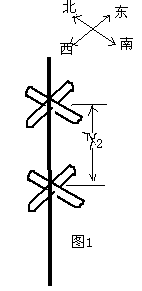
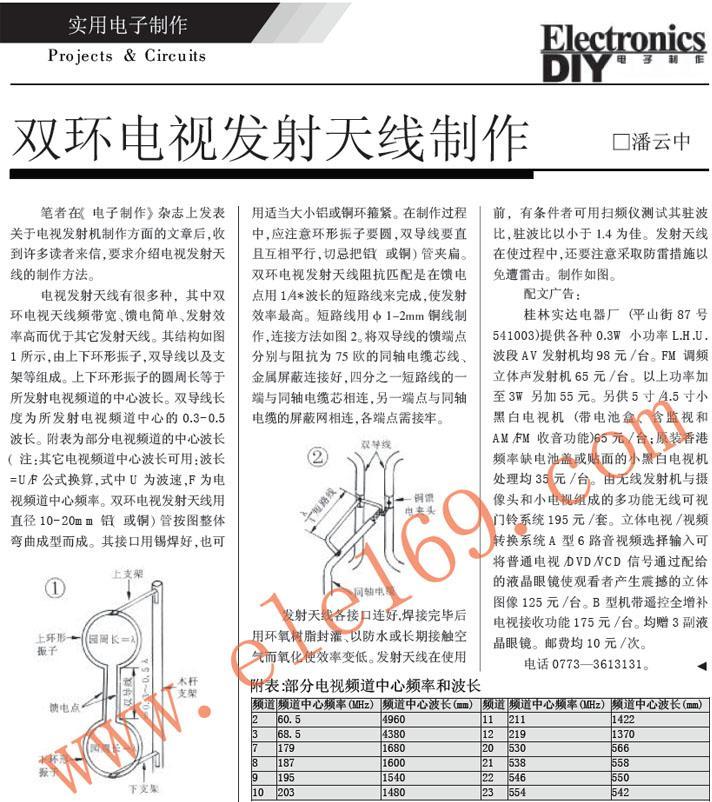
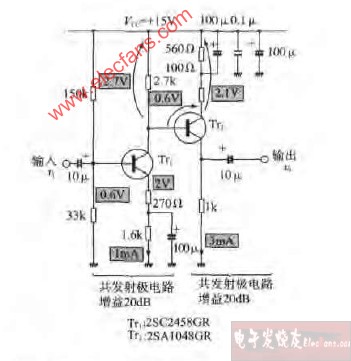


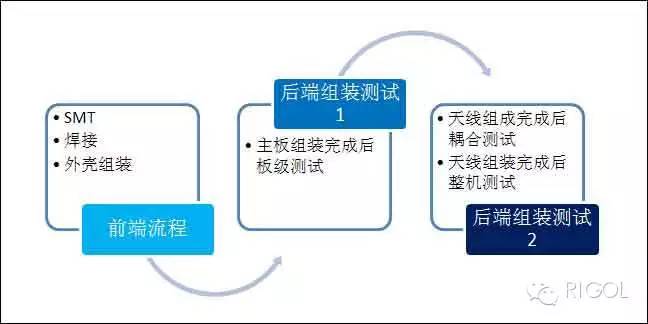
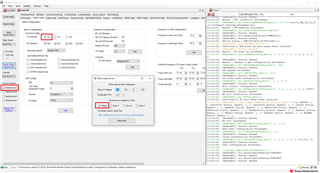












評論